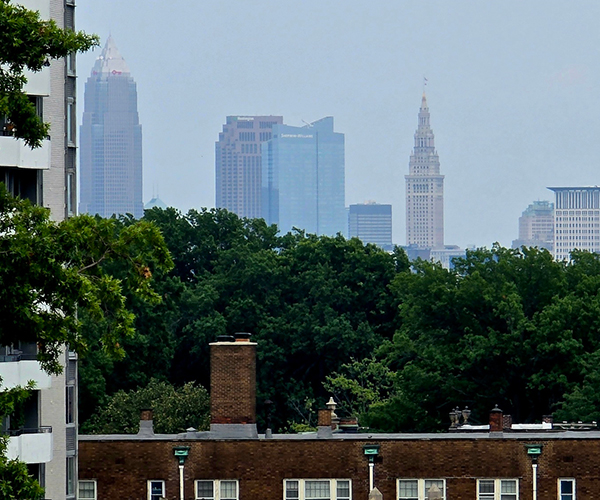When Intel announced in January they were building a $20 billion complex to manufacture computer chips near Columbus, Gov. Mike DeWine heralded it as “monumental news for the state of Ohio” and “transformative for our state.”
It’s estimated the facility will sit on 1,000 acres, potentially employing 7,000 people during construction and 3,000 Intel employees when completed. And, although it’s in Licking County, the effects will ripple statewide, including in Northeast Ohio. We talked to three area experts about what this might mean.
Bill Koehler, CEO, Team NEO
Intel coming to Ohio was a triumph for JobsOhio, the state’s economic development agency. But the ball started rolling when Lorain councilwoman Mary Springowski made contact with Intel about a potential plant in her city.
Team NEO, one of the six network partners for JobsOhio in the state, realized they couldn’t make that happen, but that didn’t mean it couldn’t happen elsewhere in the state. “We had three days to hunt down a location based on Intel’s parameters,” Koehler says. “It was important for Ohio to win.”
Koehler said the Intel courtship highlights the importance of site preparedness. “We in Northeast Ohio have had a shortage of large, readily marketable sites,” he says. “We have to double down to identify those sites that make us more nimble. You need a dynamic inventory of readily available land, urban areas, rural areas and everything in between.”
Baiju Shah, president and CEO, Greater Cleveland Partnership
“For us as a region, it’s about crafting the strategy to take advantage of this opportunity,” Shah says.
The Intel move dovetails with the idea that the area should work to attract advanced manufacturing, a plan that was already in motion, Shah says, noting that Ernst & Young opened a Center for Advanced Manufacturing in October.
Intel has an extensive supplier network — some 140 companies — and Shah says it’s his job to make Northeast Ohio more attractive to them. But Intel already does business with dozens of Northeast Ohio suppliers, including Nordson, Parker Hannafin and Swagelok.
The proximity to suppliers is important, Shah notes. And make no mistake, a short drive up Interstate 71 isn’t an inconvenience, especially when international vendors are having problems logistically. “Being two hours away is not a barrier,” he says.
Christian Zorman, associate dean for research, Case Western Reserve University School of Engineering
Zorman notes that most semiconductor manufacturing can be found domestically in Silicon Valley and the Southwest and in nations along the Pacific Rim — all areas that can be climate challenged, especially compared with the Midwest.
For years, politicians and academics have bemoaned the “brain drain,” of young people leaving the state after growing up or going to college here. The new plant could stem that tide.
“Students who graduate from Case Western, Cincinnati or Ohio State looking for jobs in the semiconductor industry don’t have to leave,” he says. “They can find opportunities here.”




